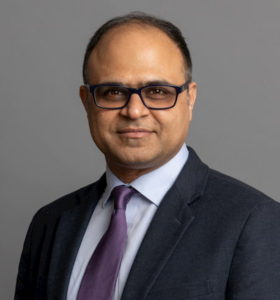
Improving Communication in Technology Driven Mental Health Services
By Padmini Murthy M.D., M.P.H., FAWA, FRSPH, Vikas Grover Ph.D., CCC-SLP, and Saurabh Somvanshi, M.D.,
Technology and Mental Health
The COVID-19 pandemic has restructured how individuals are seeking mental health services. Telepractice has existed for years but was not considered the preferred method for providing services. It has unexpectedly become a front-line tool for providing services to individuals in need. Some unexpected by-products of the current pandemic are not fever, cough, or other physical symptoms. It is the economic, mental, and survival stresses that have created a downward spiral for vulnerable populations. The crisis has resulted in an alarming global increase in gender-based violence (GBV), a silent pandemic existing in the shadows of COVID-19. According to the World Health Organization (WHO), the violence experienced by women during a pandemic has both short- and long-term effects on their physical, sexual, reproductive and mental health. Unwanted pregnancies, increased risk of sexually transmitted diseases and physical trauma by abusers are some examples of what vulnerable populations are facing. The impact of COVID-19 on mental health includes increased anxiety, higher incidence of substance abuse, self-harm, sleep disturbances and suicidal/homicidal tendencies.
Mental Health During a Pandemic
This pandemic has far reaching effects, putting stress on those helping on the front lines, and those who need help but may not be receiving it. How do you administer mental health help under the burden of a worldwide pandemic? One step in the right direction is clear communication via the use of telepractice when providing mental health services. Fong Ha et al. (2010) suggested that “effective doctor-patient communication is a central clinical function in building a therapeutic doctor-patient relationship, which is the heart and art of medicine.” This statement is more crucial than ever with the rise of telepractice. New York State Governor Andrew M. Cuomo announced that 6,175 mental health workers have volunteered in New York to provide free online mental health services.. The needs of mental health patients may vary extensively according to their diagnoses. Providing these services online might require tremendous planning, expertise, availability of resources and time. The quality of provider-patient communication is expected to play an essential role. Some challenges in face-to-screen sessions and telephonic conversations include: a) difficulty in thorough understanding of the client’s affect and emotional experience, b) technical limitations (e.g., the quality of voice transmission may mask the nuance of affect, and flickering and loss of signal in video streams can interrupt the flow of conversations).
Tips for Your Telepractice
We need to embrace these challenges and explore the possibilities to create effective treatment sessions. Here are some suggestions based on our experience and feedback from patients and families. Maintain the therapy frame, including a professional backdrop and follow the regular assessment format (active, compassionate and non-judgmental listening). Undoubtedly, some body language, and physical cues might be missed in telepractice, but a patient’s home situation and behavior in their natural environment can reveal an individual’s personal challenges. Seeing patients in their homes and their element, something akin to the age-old practice of home visits, adds a new dimension to the therapist-patient rapport. Visualizing a person within the context of their environment can increase active listening and enhance reciprocal communication. Clear and organized communication can improve doctor-patient relationship via telepractice. Allowing the appropriate amount of time and providing feedback are crucial elements for avoiding communication breakdowns. Communication needs to be empathetic, timely, open and free of judgment. Communication strategies should be tailored to individuals.
Embracing the Future of Mental Health
Before starting telehealth services, providers should establish an environment that will prevent physical exhaustion which will accumulate throughout the day. Evaluate the ergonomics of your setup and the proximity of materials you may need during the session). It is helpful to keep some extra time between sessions and maintain a list of the approved online platforms to provide options to your patients. Use high-quality headphones and microphones. In most video-based apps, by default, patients and providers see a small window on the screen, quite different from in-person settings.
It is vital to emphasize that seeing patients remotely instead of in-person is not a sign of helplessness due to this pandemic. It is an immediate support to those in need of mental health aid in the moment.
About the authors:
 Padmini Murthy M.D., M.P.H., FAWA, FRSPH is currently Professor and Global Health Director at New York Medical College School of Health Sciences and Practice. An internationally recognized leader in women’s health, Recipient of Elizabeth Blackwell medal, Global Health lead American Medical Women’s Association the First Vice President of The Global NGO Committee and NGO Representative of Medical Women’s International Association to the UN and MWIA focal point to World Health Organization . A widely published author, she has made over 150 presentations to international audiences and has hosted a talk show on Millennium Development Goals on AV Blog Talk radio.
Padmini Murthy M.D., M.P.H., FAWA, FRSPH is currently Professor and Global Health Director at New York Medical College School of Health Sciences and Practice. An internationally recognized leader in women’s health, Recipient of Elizabeth Blackwell medal, Global Health lead American Medical Women’s Association the First Vice President of The Global NGO Committee and NGO Representative of Medical Women’s International Association to the UN and MWIA focal point to World Health Organization . A widely published author, she has made over 150 presentations to international audiences and has hosted a talk show on Millennium Development Goals on AV Blog Talk radio.
 Vikas Grover Ph.D., CCC-SLP is an Assistant Professor in the Department of Speech-Language Pathology, New York Medical College, Valhalla, New York. Dr. Grover completed his Ph.D. in Speech-Language-Hearing Sciences from The Graduate Center, City University of New York and is a licensed speech-language pathologist in New York. He is a certified member of the American Speech-Language-Hearing Association (ASHA, CCC-SLP) and has experience working with multicultural linguistically diverse populations. His educational background also includes a post-graduate diploma in Counseling and Guidance. He has worked with children in Early Intervention in New York City, providing services to 0-3-year-old children with speech-language delays, autism spectrum disorder (ASD), and feeding and swallowing issues. His special focus is on training multicultural and multilingual parents in Early Intervention. His research areas are speech production and speech perception in non-native speakers of English.
Vikas Grover Ph.D., CCC-SLP is an Assistant Professor in the Department of Speech-Language Pathology, New York Medical College, Valhalla, New York. Dr. Grover completed his Ph.D. in Speech-Language-Hearing Sciences from The Graduate Center, City University of New York and is a licensed speech-language pathologist in New York. He is a certified member of the American Speech-Language-Hearing Association (ASHA, CCC-SLP) and has experience working with multicultural linguistically diverse populations. His educational background also includes a post-graduate diploma in Counseling and Guidance. He has worked with children in Early Intervention in New York City, providing services to 0-3-year-old children with speech-language delays, autism spectrum disorder (ASD), and feeding and swallowing issues. His special focus is on training multicultural and multilingual parents in Early Intervention. His research areas are speech production and speech perception in non-native speakers of English.
 Saurabh Somvanshi M.D. is currently a senior resident at the department of psychiatry, Harlem Hospital Center and Postdoctoral Residency Fellow at Columbia University College of Physicians and Surgeons, New York. He currently holds the position of vice president for the committee of interns and residents. He is also a member of the Medical and dental board at Harlem Hospital New York. His clinical and research interests include first break psychosis, Neuro-imaging and application of medical ethics. He has published in American and international peer reviewed journals of Psychiatry and Medicine.
Saurabh Somvanshi M.D. is currently a senior resident at the department of psychiatry, Harlem Hospital Center and Postdoctoral Residency Fellow at Columbia University College of Physicians and Surgeons, New York. He currently holds the position of vice president for the committee of interns and residents. He is also a member of the Medical and dental board at Harlem Hospital New York. His clinical and research interests include first break psychosis, Neuro-imaging and application of medical ethics. He has published in American and international peer reviewed journals of Psychiatry and Medicine.




